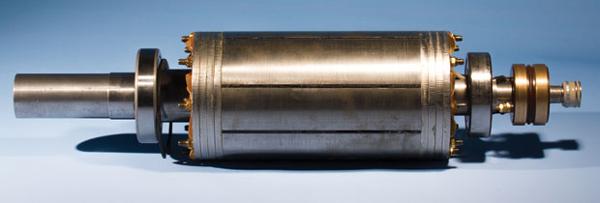Halbach Array For Magnetic Bearings
Klaus Halbach has been investigating novel designs for permanent magnet arrays for many years, he used advanced analytical approaches to employ a keen insight into such systems. One of his motivations for this research was to find more efficient means for the utilization of permanent magnets for use in particle accelerators and in the control of particle beams.

As a result of his pioneering work, high-power free-electron laser systems, such as the ones built at the Lawrence Livermore Laboratory, became feasible, and his arrays have been incorporated into other particle focusing systems of various types. This paper reports another, quite different, application of Klaus’ work, in the design of high-power, high efficiency, electric generators and motors.
When tested, these magnet motor or generator systems display some rather remarkable properties. Their success derives from the special properties that these arrays, which we choose to call “Halbach arrays,” possess.
Halbach arrays are widely used in passive magnetic bearings. Nowadays industrial rotor machines are more flexible and often operate at ultra-high speed. Using the passive magnetic bearings in certain applications, we need to take into account the occurrence of the radial components in the case of axial bearings and axial components in the case of radial bearings.
Journal bearings, in addition to passing load forces of the rotor, rotor weight and damping must take into account the existence and impact of these negative component forces. Therefore, in the design of passive bearings, Halbach arrays are introduced.
Halbach array is a special setup and configuration of permanent magnets so that you can get the concentration of magnetic flux in a specific, desired item, and remove it from less important or unwanted places.
Among the Halbach arrays, to guide the magnetic field in the desired way, we can distinguish boards between 180° and 90°. These terms relate to the relationship between the magnetization vectors.
In the construction of the passive radial magnetic bearing 180° Halbach array was used. This kind of magnetic bearing belongs to the repulsive magnetic bearings.
The examined passive magnetic bearing is composed of four pairs of the neodymium-iron-boron (NdFeB) magnets rings. These rings are axially magnetized, which means that magnetic poles are placed on the flat circle sides of the magnets.
The introduction of the Halbach arrays allows the adequate orientation of the magnetic field in the placenta and reduces the negative impact of the active component forces. The use of Halbach arrays and magnetic bearings allows to development and to implement the high performance of passive magnetic bearings.